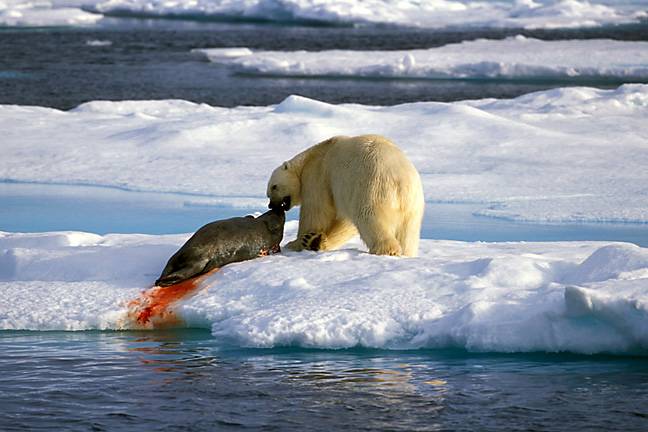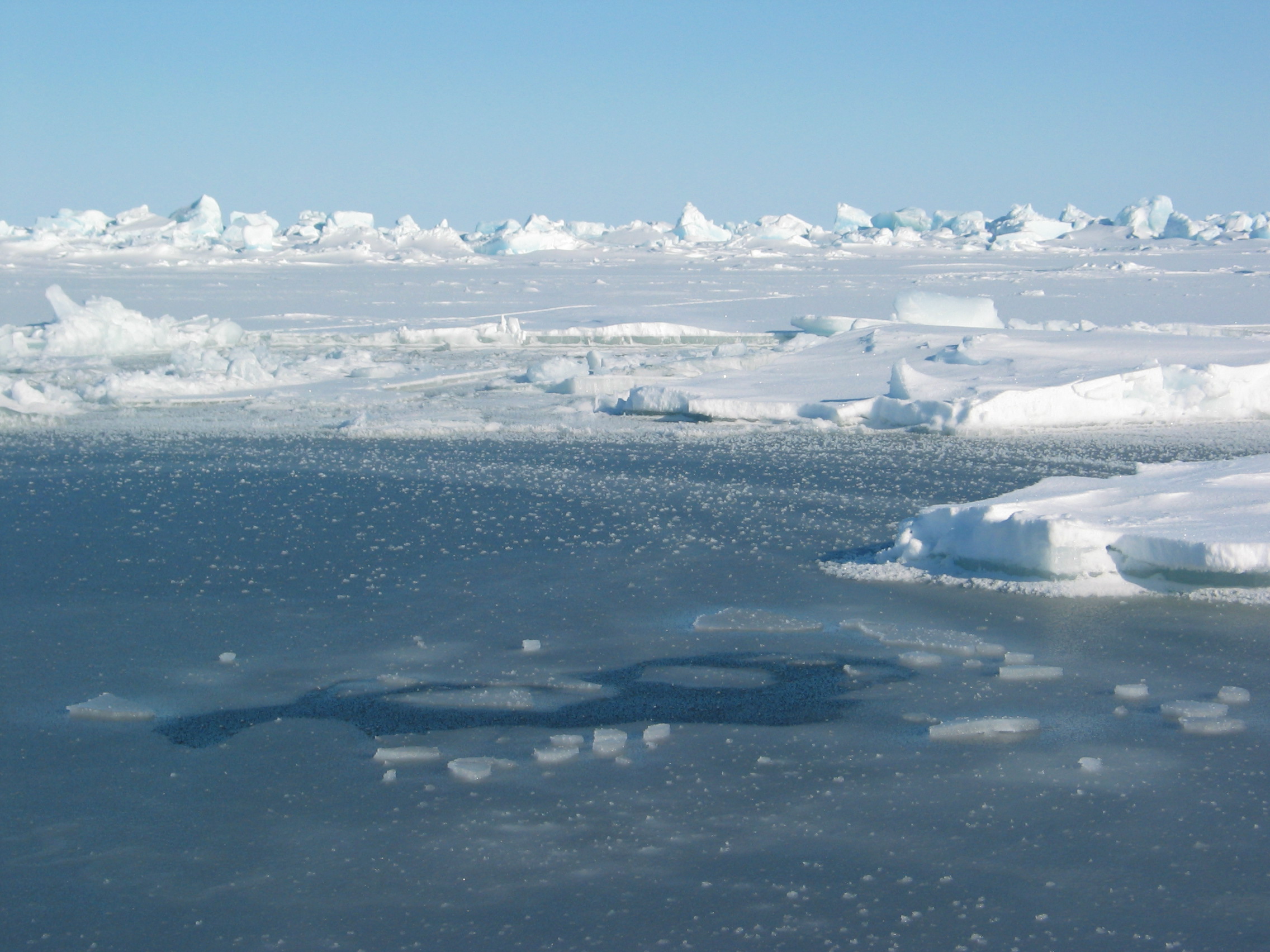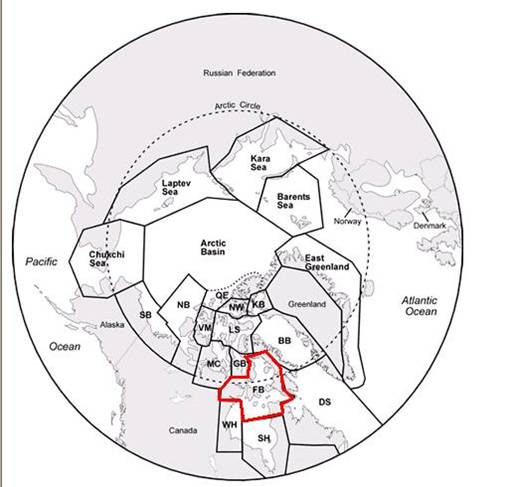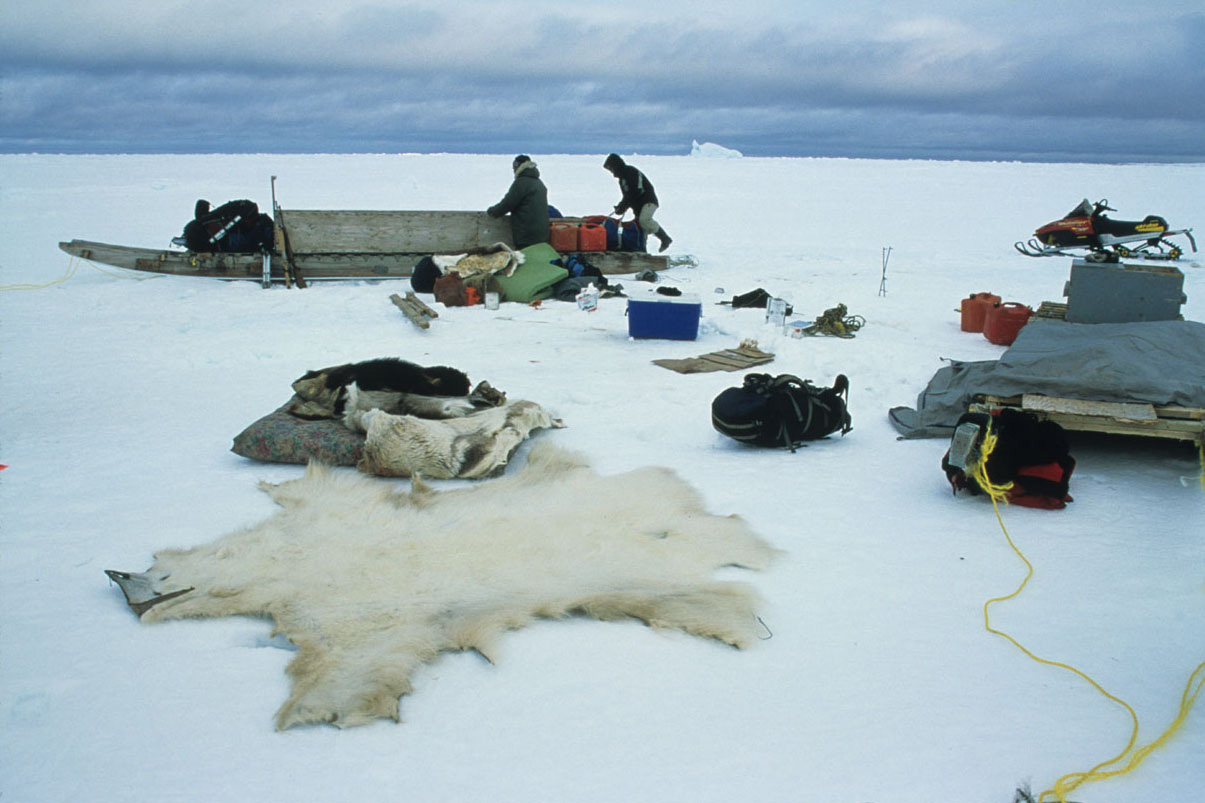



Polar bears (Ursus maritimus) are a circumpolar arctic species. The species latin name means “bear of the sea” reflecting the fact that polar bears live out the majority of their lives on the sea ice. Polar bears are carnivores and large males can weigh in at 600 kilograms! Females are about half this size – still a considerable amount of bear. While polar bears can be fearsome they are also extremely vulnerable to hunting pressure and climate change.
Sea ice conditions have been changing in Hudson Bay and Foxe Basin. Recent analyses of sea ice have shown reduced ice coverage and changes in freeze-up and ice-free dates (Gough et al 2004, Gagnon and Gough 2005, Stirling and Parkinson 2006). The changes in sea ice condition have been strongly linked to climate change in Foxe Basin and across the arctic. This is serious for polar bears as they are reliant upon sea ice for foraging, as it is from this platform that polar bears hunt seals their primary food source. Polar bears also mate, den and raise their young on the sea ice.
Polar bears come ashore only when sea ice habitat is not available – from June to October or November in more southern latitudes such as Hudson Bay, Foxe Basin and Davis Strait. Once ashore polar bears enter a fasting state but are known to scavenge and to eat some vegetation (berries, kelp) during the ice-free period. There is evidence in south-western and southern Hudson Bay that as the date of sea ice breakup advances the condition of polar bears is deteriorating and that this is causing reduced production of cubs (Obbard et al 2006, Stirling et al. 2004, Derocher et al. 2004).
Around the world polar bears are managed by subpopulations. Most Canadian subpopulations are stable or have increased over the past several decades. This situation is the result of polar bear harvest being closely managed by most provinces and territories. In the past, polar bear subpopulations in some regions of Canada were under considerable stress due harvesting and strong demand for bear hides.
In Quebec, Labrador, Ontario, and Manitoba aboriginal subsistence hunting is permitted. In Nunavut and the Northwest Territories aboriginal subsistence hunting and guided sport hunting are permitted. Sport hunting is relegated to polar bear subpopulations that have up-to-date population assessments. Quotas for all forms of polar bear hunting are in place across the Canadian arctic except in Quebec. Go to http://pbsg.npolar.no/ for details on polar bear management.
World-wide polar bears have been listed as Vulnerable by the International Union for Conservation of Nature due to the projected changes in sea ice due to climate change and the anticipated impacts upon polar bear populations. In addition, there are concerns about over harvesting in Greenland, Quebec and parts of Russia. Go to http://www.iucnredlist.org/search/details.php/22823/summ for details on the status of world wide polar bear populations.